
How to Use TTL TO 485: Examples, Pinouts, and Specs
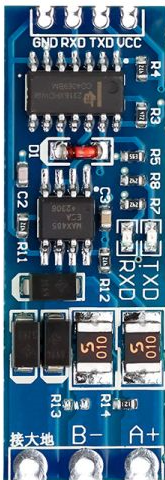
 Design with TTL TO 485 in Cirkit Designer
Design with TTL TO 485 in Cirkit DesignerIntroduction
The TTL to RS-485 converter is a versatile electronic component designed to bridge the gap between TTL-level signals and RS-485 differential signals. This converter enables seamless communication between TTL devices (e.g., microcontrollers, sensors) and RS-485 networks, which are widely used for long-distance, robust, and noise-resistant data transmission.
Explore Projects Built with TTL TO 485
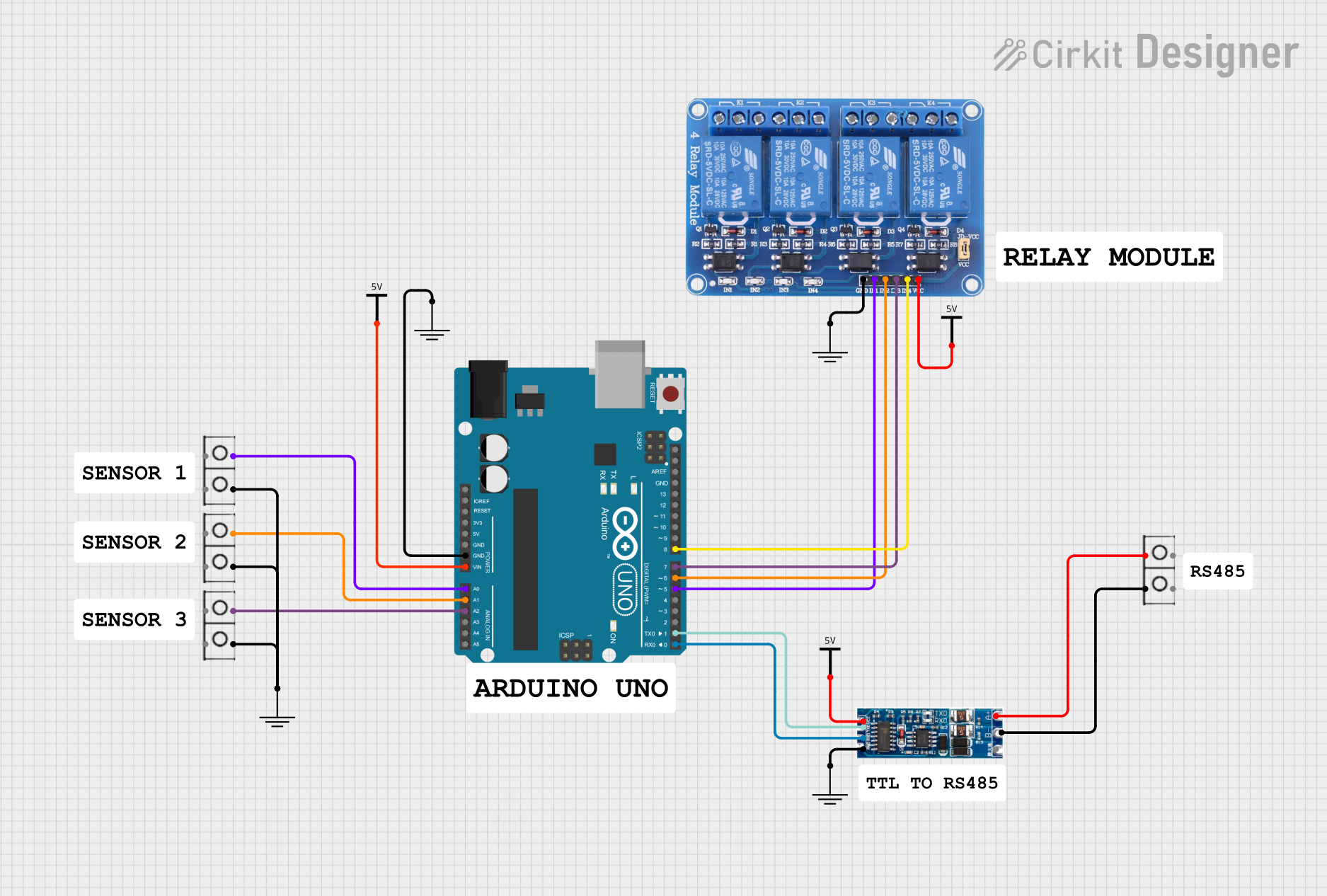
 Open Project in Cirkit Designer
Open Project in Cirkit Designer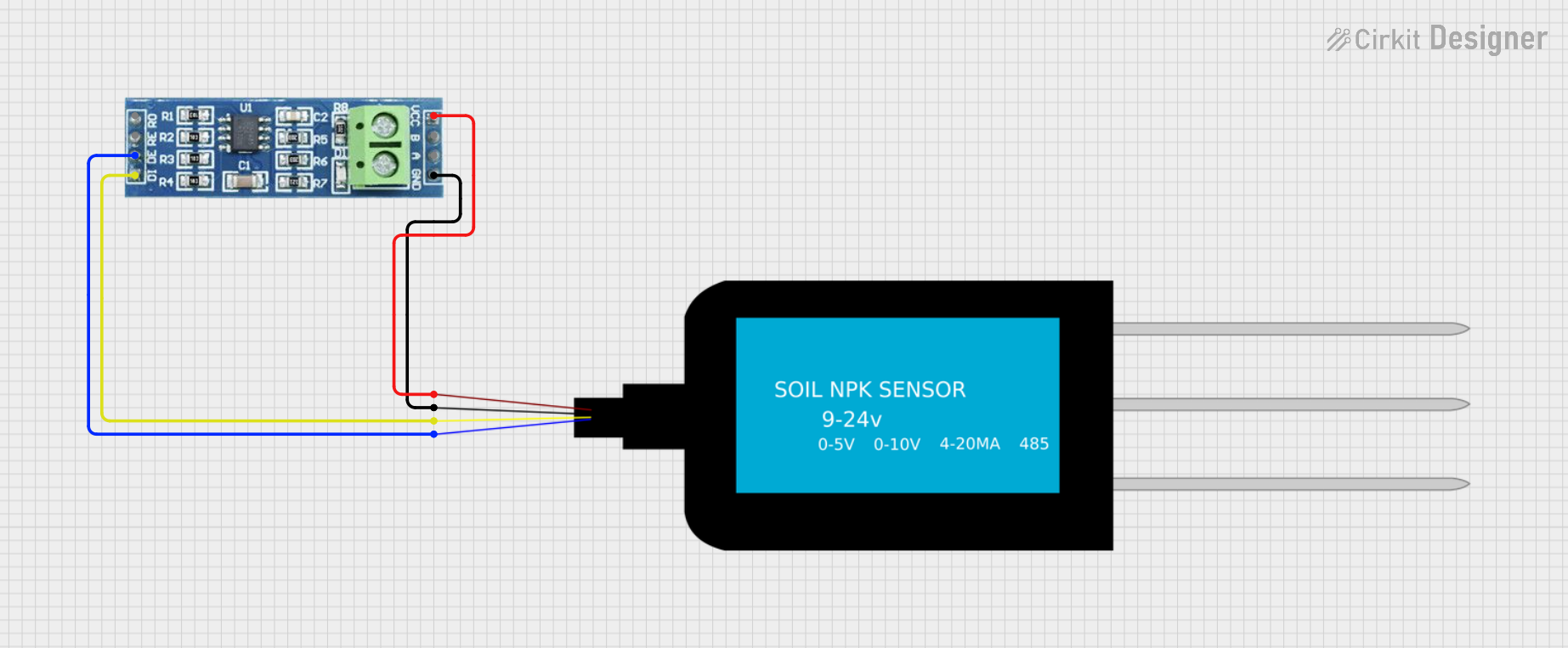
 Open Project in Cirkit Designer
Open Project in Cirkit Designer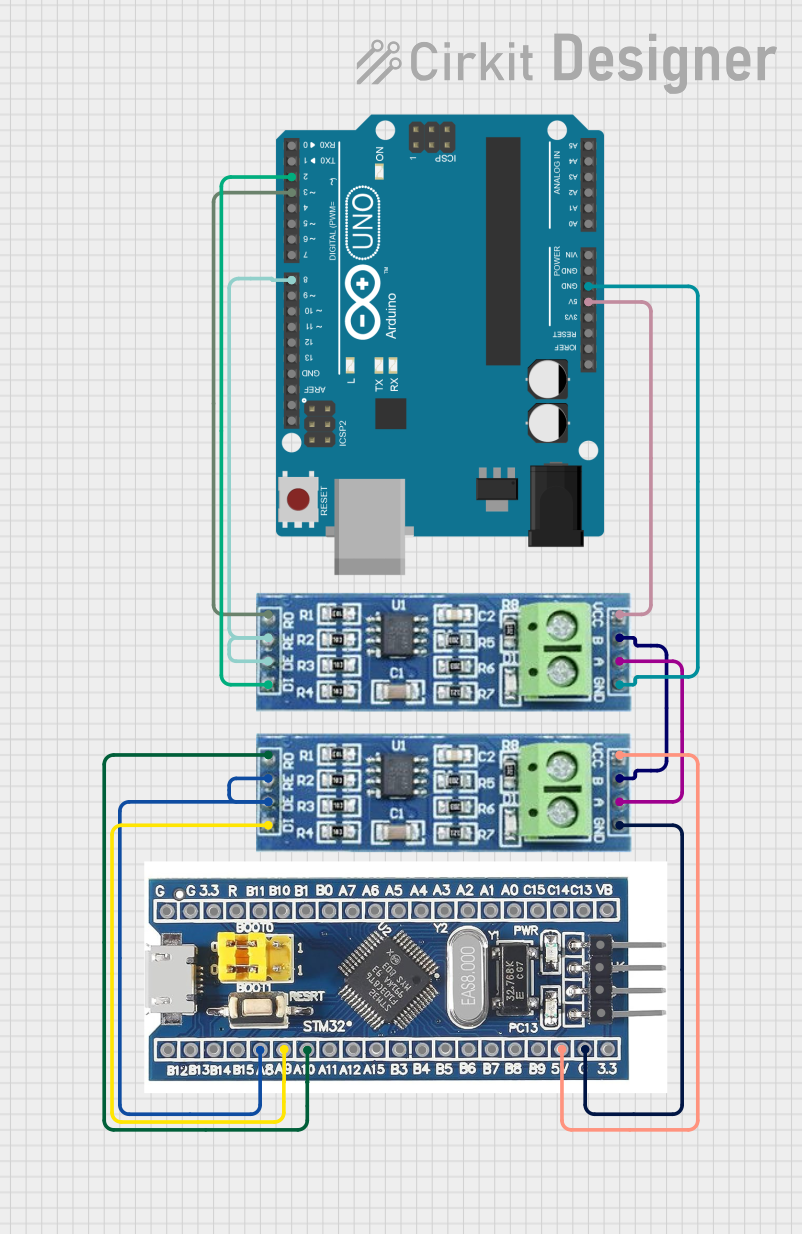
 Open Project in Cirkit Designer
Open Project in Cirkit Designer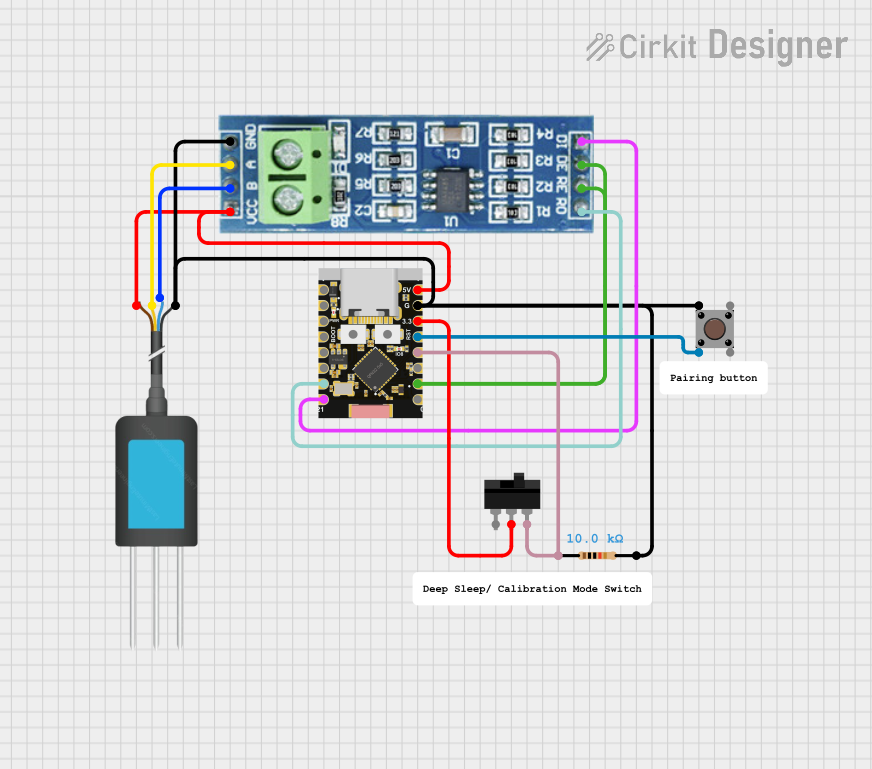
 Open Project in Cirkit Designer
Open Project in Cirkit DesignerExplore Projects Built with TTL TO 485

 Open Project in Cirkit Designer
Open Project in Cirkit Designer
 Open Project in Cirkit Designer
Open Project in Cirkit Designer
 Open Project in Cirkit Designer
Open Project in Cirkit Designer
 Open Project in Cirkit Designer
Open Project in Cirkit DesignerCommon Applications and Use Cases
- Industrial automation and control systems
- Long-distance communication between microcontrollers
- Interfacing sensors or devices with RS-485 networks
- Home automation and building management systems
- Data acquisition systems
Technical Specifications
The TTL to RS-485 converter is built to ensure reliable and efficient signal conversion. Below are its key technical details:
General Specifications
- Input Signal Level (TTL): 3.3V or 5V logic levels
- Output Signal Level (RS-485): Differential signal (A and B lines)
- Communication Protocol: Half-duplex RS-485
- Baud Rate: Up to 115200 bps (varies by model)
- Operating Voltage: 3.3V or 5V (depending on the module)
- Power Consumption: Typically < 50mA
- Operating Temperature: -40°C to 85°C
- Maximum Communication Distance: Up to 1200 meters (depending on cable quality and baud rate)
Pin Configuration and Descriptions
The TTL to RS-485 converter typically has the following pin layout:
| Pin Name | Type | Description |
|---|---|---|
| VCC | Power Input | Power supply input (3.3V or 5V, depending on the module). |
| GND | Ground | Ground connection for the power supply. |
| TXD | Input | TTL-level transmit data input from the microcontroller or TTL device. |
| RXD | Output | TTL-level receive data output to the microcontroller or TTL device. |
| A (RS-485+) | Differential I/O | RS-485 positive differential signal line. |
| B (RS-485-) | Differential I/O | RS-485 negative differential signal line. |
| DE/RE | Control Input | Driver enable/receiver enable pin (optional, depending on the module design). |
Note: Some modules may combine DE (Driver Enable) and RE (Receiver Enable) into a single pin, while others may handle this internally.
Usage Instructions
How to Use the Component in a Circuit
Power the Module:
- Connect the VCC pin to a 3.3V or 5V power source (as specified by the module).
- Connect the GND pin to the ground of your circuit.
Connect TTL Signals:
- Connect the TXD pin of the TTL device (e.g., microcontroller) to the TXD pin of the converter.
- Connect the RXD pin of the TTL device to the RXD pin of the converter.
Connect RS-485 Signals:
- Connect the A (RS-485+) and B (RS-485-) pins to the corresponding lines of the RS-485 network.
Enable Communication:
- If the module has a DE/RE pin, set it HIGH to enable transmission or LOW to enable reception. Some modules handle this automatically.
Test Communication:
- Use a microcontroller or PC to send and receive data over the RS-485 network.
Important Considerations and Best Practices
- Termination Resistors: For long-distance communication, use a 120-ohm termination resistor across the A and B lines at both ends of the RS-485 network to prevent signal reflections.
- Baud Rate Matching: Ensure that all devices on the RS-485 network operate at the same baud rate.
- Grounding: Connect the GND of the TTL device, the converter, and the RS-485 network to a common ground to avoid communication issues.
- Cable Selection: Use twisted-pair cables for the A and B lines to minimize noise and signal degradation over long distances.
Example: Connecting to an Arduino UNO
Below is an example of how to use the TTL to RS-485 converter with an Arduino UNO:
Circuit Diagram
- Connect the VCC and GND pins of the converter to the 5V and GND pins of the Arduino.
- Connect the TXD pin of the converter to the Arduino's digital pin 1 (TX).
- Connect the RXD pin of the converter to the Arduino's digital pin 0 (RX).
- Connect the A and B pins to the RS-485 network.
Arduino Code Example
// Example: Sending data from Arduino to an RS-485 network using TTL to RS-485 converter
void setup() {
Serial.begin(9600); // Initialize serial communication at 9600 baud
}
void loop() {
Serial.println("Hello, RS-485!"); // Send a message to the RS-485 network
delay(1000); // Wait for 1 second before sending the next message
}
Note: Ensure that the DE/RE pin is properly configured if required by your module. For automatic handling, no additional code is needed.
Troubleshooting and FAQs
Common Issues and Solutions
No Communication Between Devices:
- Verify that the VCC and GND connections are correct.
- Check that the A and B lines are not swapped.
- Ensure that the baud rate is the same for all devices on the RS-485 network.
Data Corruption or Noise:
- Use a 120-ohm termination resistor at both ends of the RS-485 network.
- Ensure that the cable used for the A and B lines is a twisted pair.
Module Not Powering On:
- Confirm that the power supply voltage matches the module's requirements (3.3V or 5V).
- Check for loose or incorrect connections.
DE/RE Pin Not Functioning:
- Ensure that the DE/RE pin is properly controlled in your code or circuit.
- If the module handles DE/RE internally, no external control is needed.
FAQs
Q: Can I use this module for full-duplex communication?
A: No, this module is designed for half-duplex RS-485 communication. For full-duplex, you will need a different module.
Q: What is the maximum number of devices I can connect to an RS-485 network?
A: RS-485 supports up to 32 devices on a single network. For more devices, you can use repeaters.
Q: Can I use this module with a 3.3V microcontroller?
A: Yes, as long as the module supports 3.3V logic levels. Check the module's specifications before use.
Q: Do I need to manually control the DE/RE pin?
A: Some modules handle DE/RE automatically, while others require manual control. Refer to your module's datasheet for details.